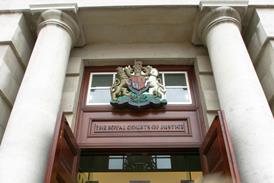The problem with an announcement telling us there is going to be an announcement is that we have no idea what the ultimate announcement will be. As a solicitor, it is a very unsatisfactory position to be in and, as a conveyancing solicitor, it can be disastrous. How can we advise our house-moving clients what they should do if we do not know how any such announcement will affect them? I am sure that theinitial announcement by the government last week left conveyancers reeling – we have not yet recovered from the SDLT holiday of last year, and the market is still buoyant, principally because there are not enough houses which is pushing the prices up. Add fuel to that by tinkering with the SDLT regime and it is enough to make the flames burn even brighter.
The immediate effect of an announcement being made was that those due to exchange put their move on hold in case there was a chance that there would be a saving.
Let us look at the more recent history of stamp duty. Until 1997 home buyers paid 1% tax on properties which cost more than £60,000, and then Gordon Brown, chancellor at that time, introduced bands above which higher payments would be charge with an upper limit of £500,000. In the last two decades the thresholds, both higher and lower, have been raised in response to rapidly rising house prices. But one of the biggest changes happened in December 2014 when George Osborne abolished the 'slab' structure and introduced progressive charges and increased the charge on homes costing more than £937,000.
There has been so much tinkering with SDLT over recent years - the introduction of the surcharge for additional properties, relief for additional dwellings, mixed use relief – that it has become a very difficult area to advise on. There has also been a growth in case management companies contacting house buyers after completion to see if they can reclaim SDLT for such matters as additional dwelling relief. It would have made more sense to look at how the tax could be simplified and I would hope that this is something that can be considered at a later date.
But back to now. I think that it is good news that the SDLT exemption for first time buyers is increased. It was in the Autumn budget in 2017 that first time buyers’ relief was introduced. As from the 22 November 2017, provided that the buyer intended to occupy the property as his or her main residence, there was no SDLT to pay. But fast forward five years and there is a real risk that first time buyers are seen as a ‘taxation cash cow’ as one commentator has stated.
Research showed that almost 30% more first time buyers were paying SDLT than when the exemption was introduced. One in four of all first time buyers pay SDLT. House prices have increased but the exemption has remained the same.
In the same vein, the doubling of the nil rate tax band to £250,000 will enable buyers to save £2,500.
But this change is at odds with a market where the Bank of England are proposing a further rise in interest rates. And for first time buyers who opened Help to Buy Isas, this particular government bonus is not available on properties priced at over £250,000 or £450,000 in London. Under this scheme, the government will top up the savings by 25% up to a maximum of £3,000 on the purchase of a first home. There is too much variance in the market and it would appear that, once again, the government are using the housing market as a prop to a failing economy.
Sarah Dwight is a sole practitioner in Birmingham. She sits on the Law Society’s conveyancing and land law committee
National Property Law Conference 2022: Roadmap to the Future
Thursday 13 October
The conference will provide residential conveyancers and commercial property practitioners with a comprehensive guide to market, legislative and practice changes.
Attend in person or join online. Click here for more information.
This article is now closed for comment.






























4 Readers' comments